Students Stage Andean Art Exhibition, Meet Artists
By Tom PorterAssociate Professor of Romance Languages and Literatures Carolyn Wolfenzon Niego wanted her students to embrace more than literature in her class on the culture of the South American Andes—which is why they have curated their own exhibition, which opens this week at the Bowdoin College Museum of Art.
The class—The Modern Worldview of the Andes: Art, Literature, Architecture, and the Environment—was taught over the fall semester and is the first to be cross-listed in Hispanic studies and urban studies, said Wolfenzon.
“By exploring art, literature, and architecture, this course, which was taught entirely in Spanish, looked at the different ways in which the three main countries in the Andes—Peru, Ecuador, and Bolivia—have dealt with processes of social, political, and cultural modernization from the late nineteenth century until today,” she explained.
“Students were required to reads works by writers from the region, such as Clorinda Matto de Turner, César Vallejo, José María Arguedas, and Mario Vargas Llosa, in an effort to analyze how internal migration to the cities of Lima, Quito, and La Paz has affected and reconfigured Andean identities.” Wolfenzon also wanted to take students beyond the written word by examining the work of Andean architects such as the iconic Bolivian Freddy Mamani and how they changed the urban dynamics of the cities, impacting both the economy and the natural environment.

El Último Inca, Cusco, 2017, digital print on paper by Fidel Carrillo (Peruvian). Museum Purchase, Gridley W. Tarbell II Fund. Bowdoin College Museum of Art.
The third component of the course looks at the contribution of visual artists, and for this, Wolfenzon had the students organize and curate their own show at the Bowdoin College Museum of Art. The show features mostly photography from the region. “This is somewhat similar to what I did in 2019 with an exhibition about Mexico, the major difference, however, being that these students were able to talk to the some of the featured artists as they planned the show,” she said.
“The Andean world is so different from the Western world, and I thought it was important to explore how the region’s artists, as well as its writers and architects, have a completely different way of relating to their vision of the world (‘cosmovision’ in Spanish). This is why I needed the visual component in order to understand better their way of connecting,” she explained.
“This was a unique experience,” said Bowdoin College Museum of Art curator Casey Braun, who helped Wolfenzon’s class organize their exhibition. “Students-curated shows are regularly displayed in the museum’s Becker Gallery,” she said, “but for them to be able to interact with some of the artists is more or less unprecedented.”
In mid-October members of the class gathered in the Zuckert Seminar Room to examine works by three Andean artists, all of whom engage with the broad themes of Wolfenzon’s course—namely, tensions between the traditional and the modern, the Indigenous and the Western, the rural and the urban and how these tensions play out in Andean culture.
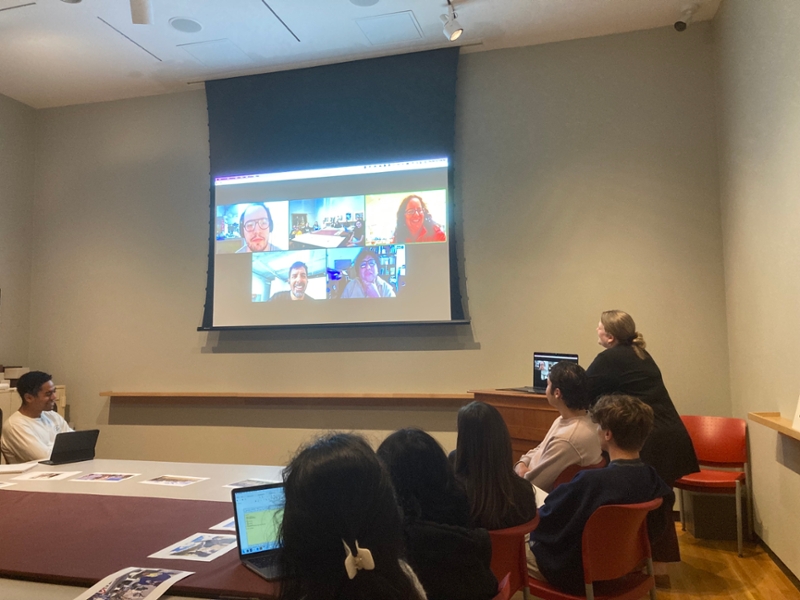
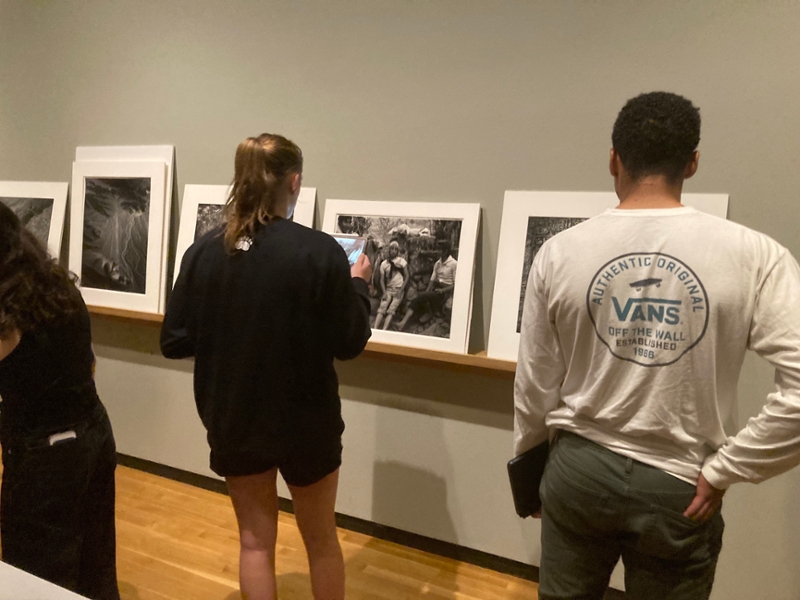
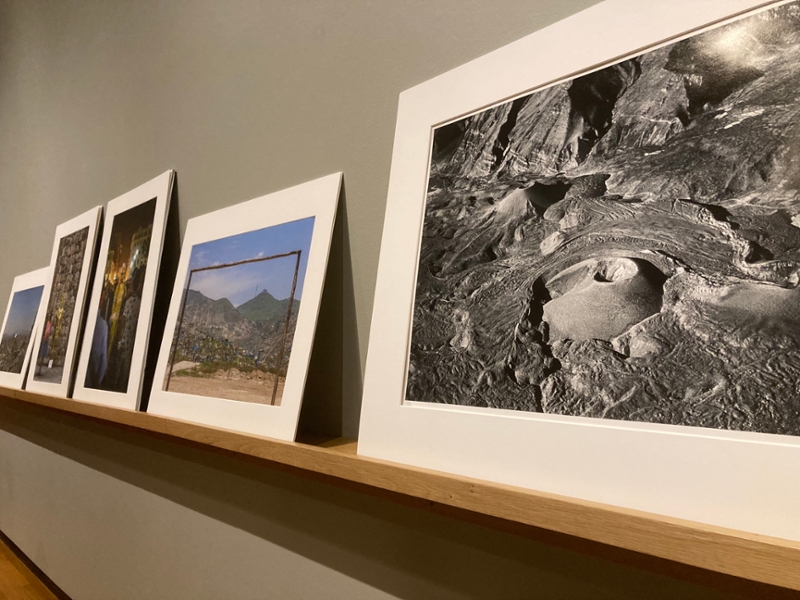
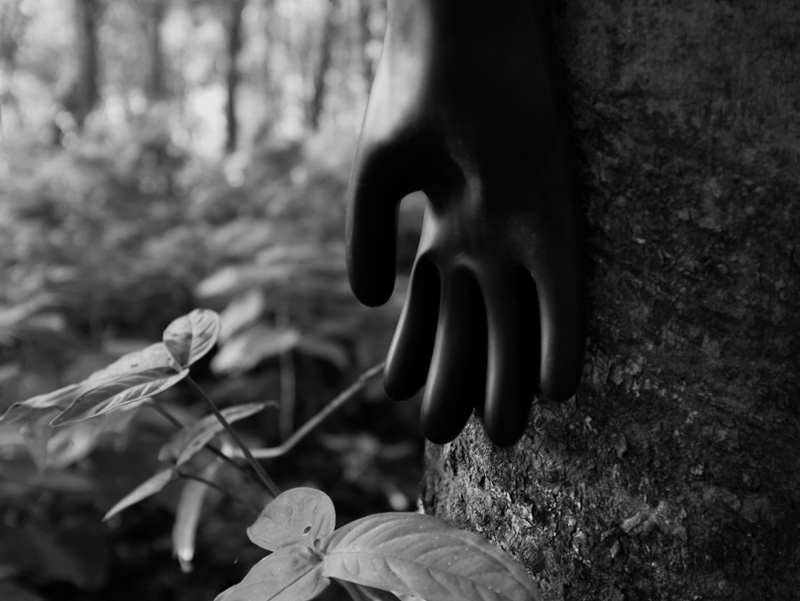
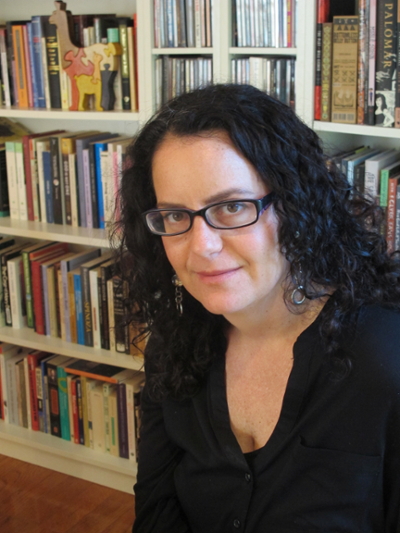
Students then got the chance to talk to the artists over Zoom, in Spanish, about their lives and their work. They followed this up with one-on-one meetings to ask further questions and talk in more depth. The artists in question are Ecuadorian Adrian Balseca, a photographic, video, and installation artist, along with painter and sculptor Juan José Barboza-Gubo and photographer Fidel Carrillo, who are both Peruvian.
“The show features seventeen works by five artists in all,” said Braun. Apart from the three already mentioned, she explained, there will be works by Sergio Urday and Mayu Mohanna, both Peruvian. “The exhibition includes some works already in the museum’s collection, some that we acquired, and some we are borrowing. The artists are mostly photographers, or at least use photography and video in installation projects.”
One of the goals of these student-led exhibitions, said Braun, is to have students write the text for the labels, clearly explaining the works of art to members of this public. “The fifteen people in this class will be collaborating to produce eleven labels. I’ll be providing guidance to them on how to write a label and where to position the artworks,” she added.
Student reaction: Leif Maynard ’23 said helping to put together the museum exhibit was a highlight of the semester. “All throughout the course, we talked about how encounters between tradition and modernity are playing out in this region with a complex colonial history and vibrant contemporary Indigenous movement. We were able to engage with these themes in a deep way through discussions with Andean artists and the process of curating, designing, and writing content for the exhibit.” Maynard said he was particularly excited to have a face-to-face Zoom meeting with Ecuadorian artist Adrian Balseca. “Having studied environmental politics in Ecuador, I was intrigued by his artistic exploration of extractivism in the Amazon.”
For Anna Kelly ’24, curating the museum show was a fantastic way to put into practice what she had learned in the classroom about Andean culture. “My biggest takeaway was that I did not know how much one could learn from art, especially when you are on the other side of a museum exhibit. The process of getting to choose the works and the discussions we had about them in class were invaluable.”
Zane Bookbinder ’24 praised the multidisciplinary approach of the class. “I really enjoyed how the art, literature, and architecture are intertwined with the geography of the Andes and its Indigenous cultures,” he said. “My favorite part of the class was the fact that we started out reading books written in the nineteenth century and ended with a collection of short stories from the summer of 2022. I was interested in the similarities and differences between literature across that large of a time span.”

Zooming with Ecuadorian novelist Ernesto Quiñonez
Andean Modernities / Contemporary Art: Cultural Transformation in Peru, Ecuador, and Bolivia runs from January 19 to March 5, 2023, in the Bowdoin College Museum Art’s Becker Gallery.